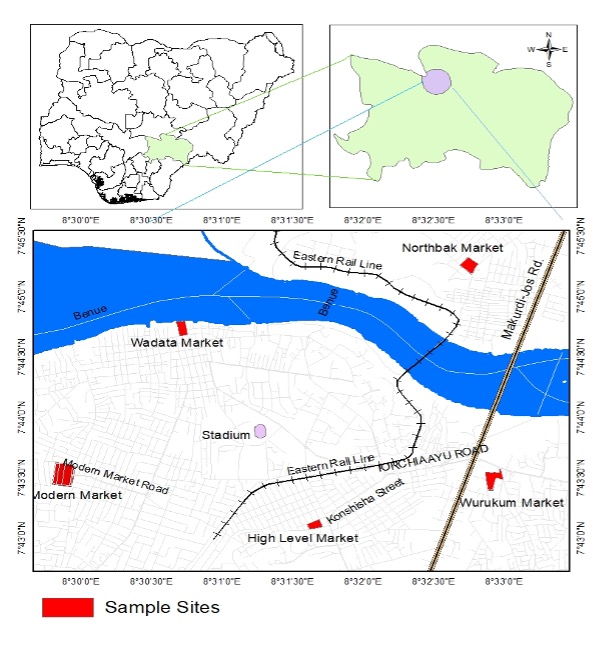Analysis of some heavy metals in foodstuffs contaminated with pesticides using a developed spot-test method
Keywords:
Contaminants , Foodstuffs , Metallic , Pesticides, Spot-testsAbstract
The need for food security is a call for a simple and quick spot-test that can be used for the detection of contaminated grains and foodstuffs. Mostly, stored grain foodstuffs contained heavy metals due to metallic pesticides applied against pest infestation and environmental metallic contact during production processes. Foodstuffs samples of white beans, red Guinea corn, and white maize corn were purchased from five markets in Makurdi Town. Pesticide residues were extracted from the samples with hot, distilled, and deionized water in a pressure hot water extraction system (PHWES), respectively. The water extract was used to assess the presence of metallic pesticide contents of some heavy metals with the spot-tests developed. The results show that the water extract from grain foodstuffs contained Al, Fe, and Zn in almost all the samples. This could be a result of the predominant use of metallic pesticides like aluminium phosphide insecticide for the storage of grain foodstuffs. The spot-test developed is a simple and veritable technique for checking metallic pesticides as contaminants on/in foodstuffs at the preventive stage. This spot-test will help to curtail the consumption of metallic pesticides from grain foodstuffs.

Published
How to Cite
Issue
Section
Copyright (c) 2025 E. K. Ukpoko, I. S. Eneji, Q. M. Amua, R. A. Wuana

This work is licensed under a Creative Commons Attribution 4.0 International License.
How to Cite
Most read articles by the same author(s)
- E. A. Yerima, A. U. Itodo, R. Sha’Atob, R. A. Wuana, G. O. Egah, S. P. Ma’ajia, Phytoremediation and Bioconcentration of Mineral and Heavy metals in Zea mays Inter-planted with Striga hermonthica in Soils from Mechanic Village Wukari , African Scientific Reports: Volume 1, Issue 2, August 2022
- Anthony Ugbedeojo Atumeyi, A. U. Itodo, R. Sha'Ato, R. A. Wuana, Physicochemical analysis and dissolution kinetics of Itakpe iron ore in acid, base and aqueous media , African Scientific Reports: Volume 4, Issue 1, April 2025




